Updated on June 9, 2022
In B2B, you won’t be successful selling to a company that does not really need your product or service right now, or simply – it can’t afford it.
On the other hand, selling comes easy to those that have an aching business pain that your solution can help with. Actually, they might be actively looking for you right now.
Yet, many businesses are still having a hard time connecting with the second type of B2B buyers – those that fit their Ideal Customer Profile.
Here is some help with that.
Quick Recap:
What is an ideal customer profile ICP (or a B2B Customer Profile)?
An Ideal Customer Profile (also known as a B2B Customer Profile), is a rough sketch of the best-fit companies for your products and services.
It helps you focus your efforts on finding and targeting your ideal prospects who will enjoy the most value from your business offer, as opposed to wasting time and “dignity” asking random companies to buy from you.
The way I see it = your ICP acts as the best representation of the business organizations that you had in mind when you came up with the idea to build a product (or a SaaS solution) to serve their specific, business needs and it guides you to find them and target them with the message they care to receive.
The ultimate purpose for defining an Ideal Customer Profile is prioritizing your resources on those prospects that have the highest potential to buy from you. =Something we like to call smart working, instead of hard-working.
As we stand behind one of the leading platforms for B2B Sales & Marketing teams, we believe it’s only fair that we share our insights with the business-to-business community along with actionable steps for finding and targeting their ideal buyers. We owe you that much.
Therefore, this article will be focused on the best practices for identifying your ICP in B2B Sales.
For starters, let’s look at all the different reasons why you need to define an ICP framework for your business.
(p.s. B2B companies that have crafted and make use of their own Ideal Customer Profile (ICP) achieve 68% higher account win rates. (TOPO)
Benefits of having a clearly defined Ideal Customer Profile Framework
- ICP Framework will not only align your Sales and Marketing teams but will also guide them to invest their resources where it makes the most sense = targeting the ideal buyer;
*Sales and marketing alignment leads to your company becoming 67% better at closing deals (Marketo) and enjoy 36% higher customer retention rates (Marketing Profs). 👈 True that. From our own experience. - An ICP helps you make better decisions when planning out the future roadmap for your SaaS updates and new product features as it sheds light on the most acute problems of your current customers 💡;
- If your organization is into Account-Based Marketing (ABM), the ICP will act as your guiding compass to aim your sales efforts on specific, high-value target accounts; If not – take a look at these stat: According to SalesForce, 89% of B2B organizations already have an account-based marketing program. Maybe start incorporating ABM into your business?
- Increase Customer Acquisition Rate – Having a well-defined B2B customer profile helps you understand the business context surrounding the type of customer that is in current need of your solution and how best to approach them. This results in more closed deals and mutual benefits on both sides. It’s a win-win situation;
- Increase Customer Lifetime Value – The more qualified prospects you target (once you know who they are) the better their LTV and lower churn rate. Being surrounded with satisfied and valuable customers has a direct influence on your business’ exponential growth. (Referrals included!)
- Faster Sales Cycles – ICP is truly, madly, deeply an inevitable part of the strategic planning for sales activities.
among many others.
But what are Firmographics, really?
In the B2B world, marketers and salespeople target entire companies and business organizations (not just individual customers as in B2C) to promote and sell their products and services.
Therefore, firmographics are to B2B Sales & Marketing teams what demographics are for the B2C and e-commerce companies.
Firmographics then, are the data points (units of information) you have on your B2B prospects that help you better understand the context surrounding their business so you can create customer profiles (firmographic segments) and place each prospecting company into a specific segment according to their mutual characteristics & pain points related to your products/services.
Makes sense, right?
Firmographics help us – the B2B professionals, differentiate between the many companies the industrial market consists of, sort out those that are a good fit for our solution so we can focus our time, money, and effort where it makes the most sense for collaboration.
Then, we divide and segment our “ideal fit” firms according to their similarities and mutual traits to better understand their business needs and therefore deliver relevant and personalized marketing & sales communication to optimize our sales win rate.
Essentially, Firmographics are the attributes of firms and B2B companies that help you understand who are your ideal buyers from your target market.
🏢 Firmographic data on a company level include:
- Industry
- Location: Head Quarters + Subsidiaries per Country or Region (for Geophysical Prospecting);
- Company’s Name, Email Address and Phone Number;
- URL – The domain of the company’s website;
- Operating status – Is the company still active on the market or not?;
- Turnover (or Company Revenue) – The amount of money taken by a business in a particular period;
- Company Size (Employee Range + Revenue Range);
- Employee range -Total number of employees at company + Organizational Tree by Hierarchy;
- Technographics – Technology and applications that are used on the company website (e.g. program languages, web frameworks, payment gateways, operating systems, etc.);
- Monthly Tech Spending.
What is a buyer persona and why is it important?
If your Ideal Customer Profile consists of B2B businesses that fit your target company, the Buyer Persona is the representation of the business professionals working behind the curtains of those companies.
Remember, B2B buyers are still human.
Even though you target an entire organization, your sales reps will communicate with the business owners, key stakeholders, and the people involved in the decision-making process.
That’s why we have Firmographic data on contact level.
Bear in mind, since now we talk about individual human beings that are part of those corporations, in sketching your Buyer Persona you will have to take into consideration the demographics, psychographic, behavioral data besides the firmographics on contact level.
Also, you will have to create a different “portrait” of a Buyer Persona for each department. In other words = more Buyer Personas per prospecting company.
👨🏻💼👩🏽💼 Firmographic data on contact level (the professionals working in those companies) include:
- Name and Surname of the business professionals you aim to contact;
- Job Position and Job Title;
- Department;
- Contact in the Organizational Tree by Hierarchy (Director, Executive, Manager…);
Did you know that 81% of non-executive B2B employees have a say in company purchase decisions? Now you do. - Contact Location (Country and City) for Geophysical Prospecting;
- Direct Email Address;
- Personal Social Media Profile. In B2B that would be LinkedIn = 89% of B2B marketers use LinkedIn for B2B Sales.
What is Firmographic Segmentation?
In B2B, using Firmographic Market Segmentation makes all the difference between wasting your time shooting in the dark with darts and expecting to hit the dartboard VS. using a sniper.

We have only so much time to spend here on Earth, would you waste it prospecting to people that are not in the position to decide if they can buy your product? Or businesses that do not need your service at all? Or companies that simply cannot afford the price of your solution (yet)?
Exactly.
That’s why every successful B2B organization claims to use firmographic segmentation to nail down its ICP.
Here is an example of using Firmographic Segmentation to define Ideal Client Profile and where to find them:
"We use Firmographics to make highly targeted lists for our cold email campaigns and LinkedIn outreach. The campaigns are written keeping in mind the size and goals of the company, their competitors and case studies from our clients in their niche. For defining an ideal client profile, we the following firmographic segmentation: - Industry and sub-industry (eg. Marketing SaaS, SalesTech, D2C beauty eCommerce) - Size of the company - (number of employees) - Funding Status - Revenue - Areas of Operation - Is their website/app already translated? - News - Is there news of them expanding? And finally, we look for firmographic data on GetLatka, Traxn, Crunchbase, SeedTable, SaasStock and other industry-specific directories. Also, we look at their website and LinkedIn to see if they are a good fit based on employee size, funding, geographical location and business format."
Nikita Agarwal, Director at Milestone Localization
Extra Benefits you can expect from using Firmographics Segmentation to build your Ideal Customer Profile
* Personalize your cold outreach – The more you know about your prospects, the more meaningful the conversation = the better the outcome. Here is an informative read on how you can leverage the data you have on your prospects to deliver hyper-personalized outreach that ensures reply rates of up to 45%.
* Predict the buying behavior of your potential B2B customers and don’t miss out on sales opportunities – Have you heard about Sales Triggers? We talk a LOT about them in this:
Related Read: Ultimate Guide on Sales Triggers and how to Track Them
* Optimize the ROI on your B2B Marketing campaigns and boost your inbound marketing efforts – 78% of B2B companies use website conversions as a performance metric.
This means leveraging SEO and content marketing. According to Forrester & Gartner, In 2020 alone, 80% of the B2B buyer journey took place on the internet and those B2B buyers will only reach out (or respond) to an SDR only after they’ve surveyed the market and done extensive research.
Actually – 90% of B2B customers research approx. 2-7 sites before they purchase.
Brian Dean explains it simply:
Sure, your marketing team can send thousands of visitors to your site. But if those marketers don’t know what an ideal customer looks like. Or why they’ll ultimately convert. Traffic could stay exactly that: just traffic.
Brian Dean, Founder of backlinko
How to Identify and Segment your Ideal Customer Profile?
Brainstorm 🧠🌩️
Make this a group activity where every member of your Smarketing team is involved as you brainstorm all together to sketch the “first draft” of what your ideal potential customers look like through the following points:
Company Location – Where on Earth are located the most valuable companies from your addressable market? (When Elon Musk finally builds the first colony on Mars, we will include them as well.)
Industry – What are the top 3 industries, or top 1 business niche if your service is resolving super-specific pain points?
Type of company – Private companies, Public companies, or One Person Companies (OPC) – Private Limited?
Company Size – Startups, Small to Mid-size Business (SMB) or Large Enterprises?
Company Annual Revenue or Gross margin – In what revenue frame should your prospects fit in to be able to afford the price of your product or service?
Company Level or Product company maturity – How mature a company is based on the project and the clients it is dealing with.
Look at your existing clients 🧐
Especially those that are most satisfied with your product or services and have the highest LTV.
Survey your existing customers – What made them choose you? Ask your customer success team to conduct in-depth customer interviews particularly for this need. Prepare a list of questions that aim at constructive feedback.
Your key customers hold the secret to the unique customer acquisition process of your sales professionals. So why not simply ask them?
Was there something that created friction during the sales cycle and slowed down the sales process? Remove those obstacles.
What made the buyer journey run smoothly and with the least amount of resistance? Hunt for actionable sales advice from your most satisfied customers – what brought the “a-ha!” moment and made them decide to buy from you?
Their answers will help you to narrow down the common characteristics of your current prospects.
Our customer success heroine Ana has developed a whole drip campaign for this purpose so she can follow their satisfaction with our product over different time periods since they’ve been with us.
Analyze your Web Analytics data 👩💻
Web analytics tools help you better understand your customers (and future customers) by giving you insight into pretty much every activity happening on your website.
This includes how users navigate and interact throughout your website, what webpages they’re most engaged with, what content they prefer, and whether they take valuable actions on the site (⭐conversions⭐) such as: creating an account, purchases, or contact requests.
As a B2B Marketer, using this data, helps me optimize channel and website performance by making data-led decisions.
There are quite a few analytics tools available on the market today, some of them free and others paid, to name a few: Hotjar, Kissmetrics, Adobe Analytics, Woopra…
But our personal favorite is the free version of Google Analytics 💘 which we use to understand and make sense of our website traffic, engagement, and conversion data. I will be using Google Analytics tab names and vocab for this purpose.
When crafting your Ideal Customer Profile, make use of your analytics data to look at the origin of your website traffic:
The Audience tab will give you insight into “WHO is coming to your website?” including their:
Demographic profile: this is how you learn more about the types of people that are interested in your website, after all – they are your potential future clients.
Age – What is the age range most of your website visitors fall within? Gender – Depending on your business needs, gender might be relevant for you: Does one gender make the majority or evenly split?
Geo Report: It’s KEY to know where are your potential customers physically located and what language they speak.
Location – What country do they currently live in derived from the IP address? What Region, what city? Language – What language do they speak?
This data information will assist you to find groups of high-value customers in different locations and focus your efforts on segmenting them accordingly.
Mobile Report: Although it’s called “Mobile Report” it enables you to view traffic and conversion data from mobile and desktop users, as well as the devices being used. SO what device your ICP prefers to use – desktop, tablet, or mobile?
The Acquisition tab will let you know “HOW are users getting to your website?”
Or simply put – Which channel/source/medium (ferry boat?) they used to travel and arrive at your website (island 🌺)?
When you can get an idea about where your most valuable traffic comes from you will know where to optimize and allocate your resources.
Sources include Google, Bing, LinkedIn, Appsumo, Twitter, Direct…
Mediums include Organic, Email, CPC (PPC), Display, Social media, referral.
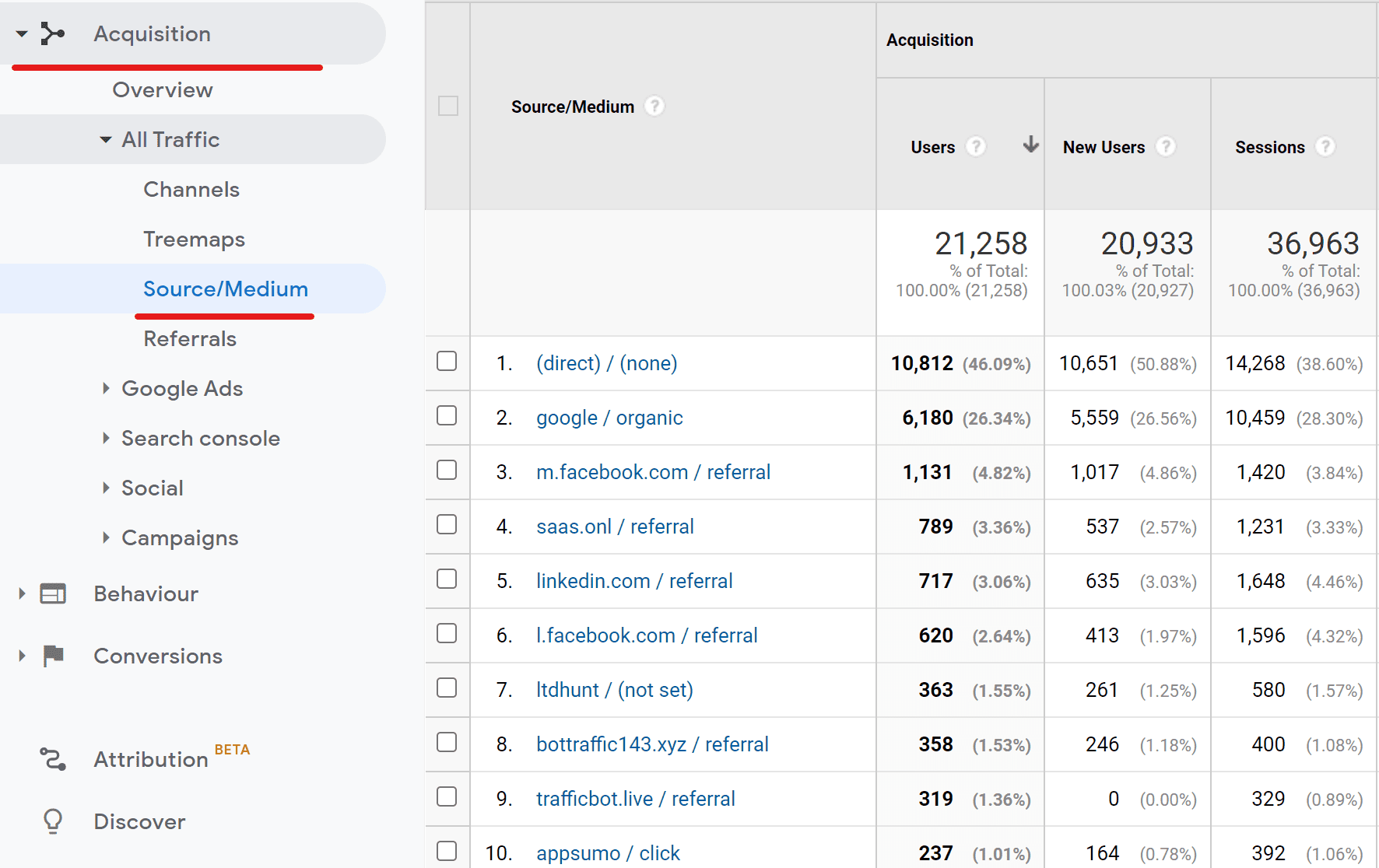
Those are the basic ways in which you can leverage Web Analytics Data to help you create a well-rounded profile of your ideal customer.
With this type of holistic approach to defining an ICP you will enjoy the benefits of being able to get closer to your potential customers, to better understand who they are, to forecast monitoring the patterns in their behavior on your website, and prioritize your resources where the gold mine actually is.
What are the best Firmographic Data Providers / B2B Database?
Firmographic data providers are SaaS companies that offer access to a huge B2B database filled with business information such as company and contact data that you can make use of for finding your ICP and more targeted and meaningful sales prospecting.
Following are the top 5 B2B Database and Firmographic data providers in the industry. Not to brag but we are one of them.
#1. Sales.Rocks
If you didn’t know already, we are reaching some industry heights as one of the most popular Firmographic Data Providers. It’s only natural since our mission and goal in life are to help businesses connect easily to exchange their services and grow their revenue.
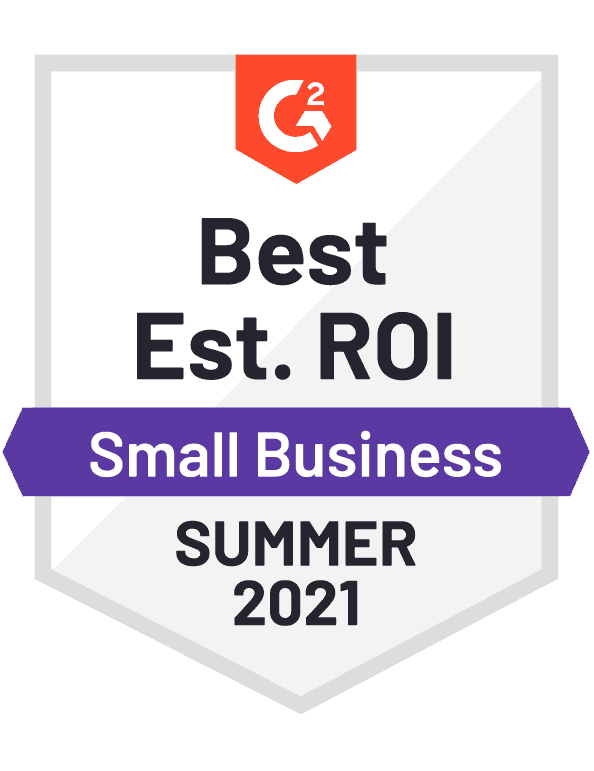
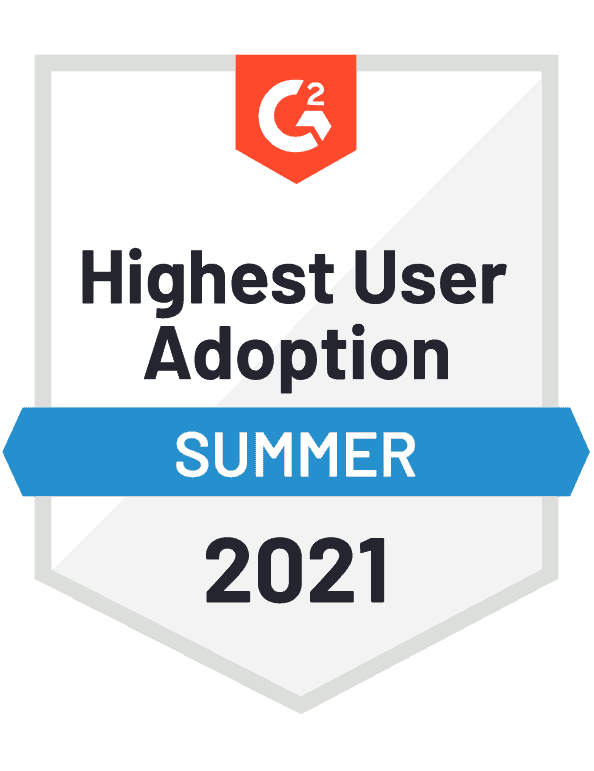
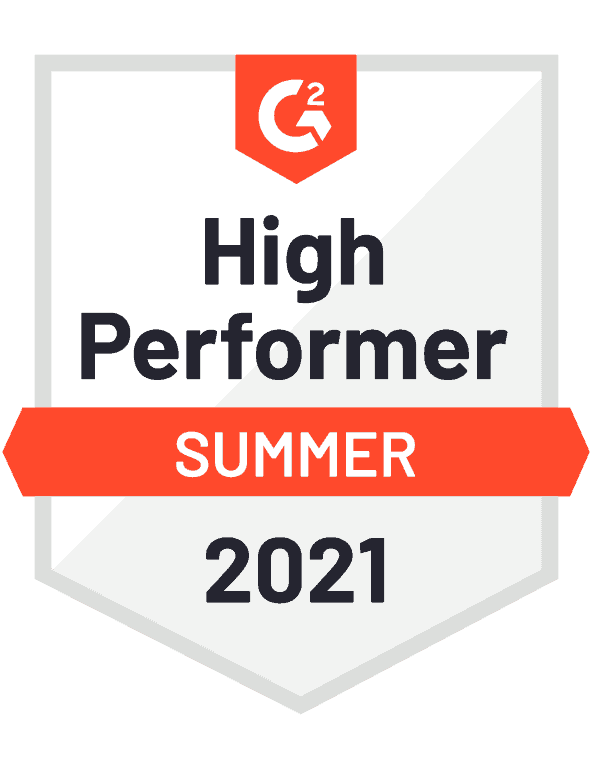
Our B2B Database acts as a storage of a huge volume of structured data filled with valuable information about companies and business professionals from 241 countries & territories worldwide so you can perform your Firmographic segmentation without any friction.
On top of that (to make your life easier), we have integrated Sales & Marketing automation tools and features that you can use to automate your every day, manual tasks that do not really require a human touch and set them on autopilot.
The features include:
Company and Contact Search – Using our powerful filtering system based on 50 different data points you can nail down your Ideal Customer Profile in minutes.
Email Warmer – Since 77% of B2B companies use email and 99% of buyers, consumers, and customers check their email accounts every day, we thought you might find useful this tool to keep your emails out of the spam folder by “warming them up” before you start your cold outreach, improve your email deliverability and keep your email sender reputation neat & tidy.
Multichannel Drip Campaigns – You can connect your email provider with Sales.Rocks platform, get all the information you need on your prospects, and now that you’ll have their email addresses and LinkedIn profiles you can have fun crafting drip campaigns to reach your prospects on both channels. Play around setting triggers and conditions that will maximize your delivery and email personalization.
The Sales Toolkit will arm you with an email & phone verifier – to check if you have the correct email addresses and phone numbers so you don’t waste time and risk spam alerts + the Bulk Extractor will enrich your already existing data with the missing information.
Chrome Extension – based on data scraping technique, the Sales.Rocks Chrome extension will extract, or ‘scrape’, data from any website you land upon while surfing the internet. 🏄
Find your Ideal Customers today!
And get €50 off of your first subscription month.
#2. ZoomInfo – Powered by DiscoverOrg
ZoomInfo is another B2B Database provider, including Firmographic data, so you can perform firmographic segmentation using their tool.
They collect most of their data by researching and interviewing companies a few times each year. But they are focused on the US market, not globally, with an accent on Boston, New York City, Houston, Chicago, Los Angeles, and Atlanta.
ZoomInfo is a sales intelligence tool best suited for enterprises and large corporations that do their business in the USA. You can use them as well to build out a set of comprehensive ideal customer profiles, enrich your marketing database with business information and use uses AI to recommend similar contacts based on previous searches.
Pricing: Quote-based Plan, but when you do the math it goes like this: $4900 per 5000 emails or $10.000 per year.
See how ZoomInfo compares to Sales.Rocks
#3. Vainu
Vainu is a Sales Intelligence tool and a business data provider based in Helsinki, Finland. As you can read on their homepage, they do provide firmographic data but mostly of Nordic and Dutch companies.
Vainu’s B2B database covers only 7 countries, but it includes features such as alerts, workflow triggers, and actions you can set for strategic sales and marketing operations. They offer integrations to Salesforce and Hubspot, so if you’re using one of them, you can get Vainu’s prospects directly into your CRM.
However, their pricing plan is based on a yearly subscription module and pricing per country.
Check out how Vainu compares to Sales.Rocks
#4. Snov.io
Snov.io is a sales automation platform that is based upon a B2B database with data coverage mostly from LinkedIn. It offers firmographic data on your leads and prospects through three different ways – Email Finder Extension, Li Prospect Finder Extension and Domain Search.
Just the same as Sales.Rocks, Snov.io’s features include launching drip campaigns, verifying emails, finding email addresses as you browse the net and providing you with technographics among other B2B information.
Compare Snov.io with Sales.Rocks
#5. Lusha
Again, Lusha’s B2B database is limited mostly to LinkedIn data, but still, they are our fifth choice as one of the better Firmographic data providers on the market.
Their other features for prospecting and cold emailing are not completely developed just yet. In order to use Lusha, you need to download a plugin and start your LinkedIn search. For this to work, you’ll need to know the names and surnames of the business professionals you’re aiming to contact.
However, Lusha is best-known for its phone numbers data accuracy and is one of the best phone number data providers in our industry. So if your business is into cold calling, you might consider them.
Just like Sales.Rocks, Lusha is 27001 ISO certified, CCPA and GDPR aligned.
Feature comparison between Lusha and Sales.Rocks
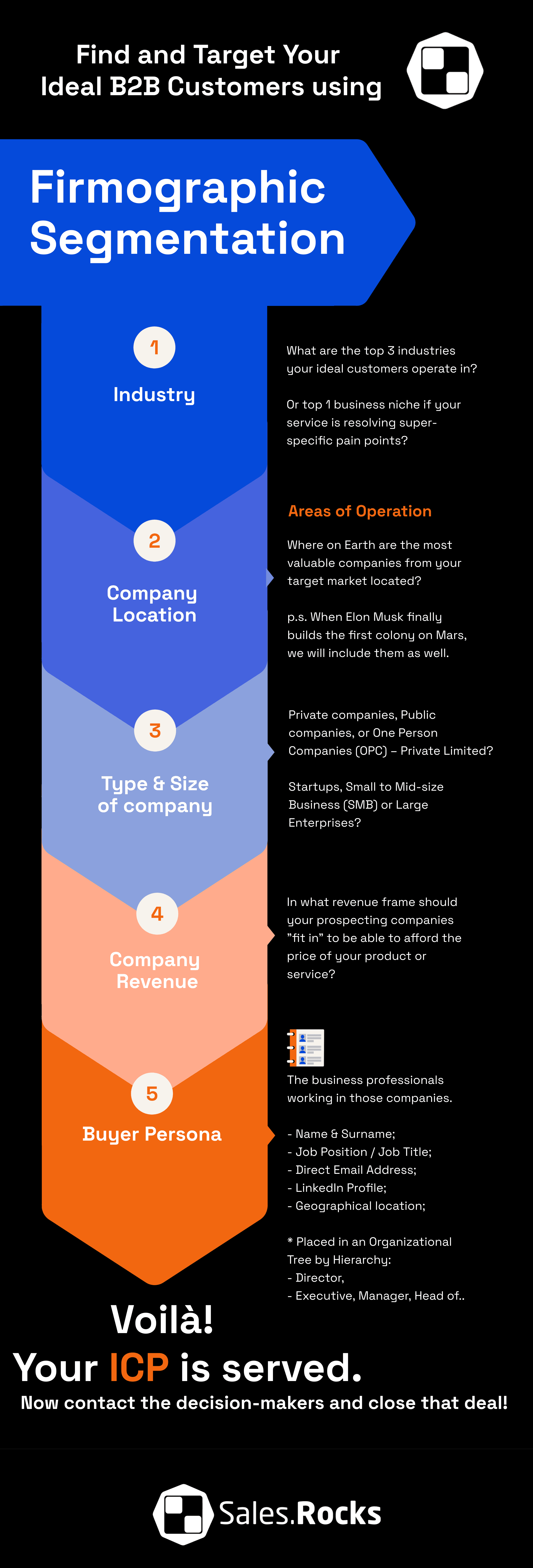
Have fun using Firmographic Segmentation to find and target your Ideal Customers – and good luck! 🍀


